We had originally published this article about the Antlers, William C. Whitney’s October Mountain estate, back in 2011. We have recently discovered a treasure trove of new information about the estate and game preserve that Whitney built on top of October Mountain, and have decided to update and reissue our original article.
In 1895 Senator Thomas Post began buying up farmland in the town of Washington, Massachusetts on behalf of an anonymous buyer. This came as a relief to many of the town’s farmers as their farms had fallen onto hard times. The mountainous terrain of the town of Washington had proven to be too difficult to farm. Town farmers were therefore more than willing to sell their land to Senator Post who was paying up to $5 per acre. This was a very generous offer given the fact that much of the land was not suitable for farming. Not much thought was given to these real estate transactions until the land that was purchased totaled in the thousands of acres. In 1896 a New York City newspaper had published an article revealing that William C. Whitney was the purchaser of this land and that he had intended to build a luxurious hunting lodge on top of what is now October Mountain. In addition to the construction of a hunting lodge, William C. Whitney also intended to build a honeymoon cottage for his son, Harry Payne Whitney, and his son’s newlywed wife, Gertrude Vanderbilt.
Who was William C. Whitney?
William Collins Whitney (July 5, 1841 – February 2, 1904) was a Harvard educated Lawyer, American politician, and businessman. Whitney also served as Secretary of the Navy under President Grover Cleveland. Whitney had dedicated himself to rebuilding the US Navy fleet which had fallen by the wayside after the Civil War. Whitney insisted that U.S. warships were to be built stateside, as opposed to outsourcing ship building, and is credited with stimulating the U.S. ship building and plate armor industries. Whitney left his role as Secretary of the Navy after President Cleveland’s first term had ended and returned to private law practice and his investments.
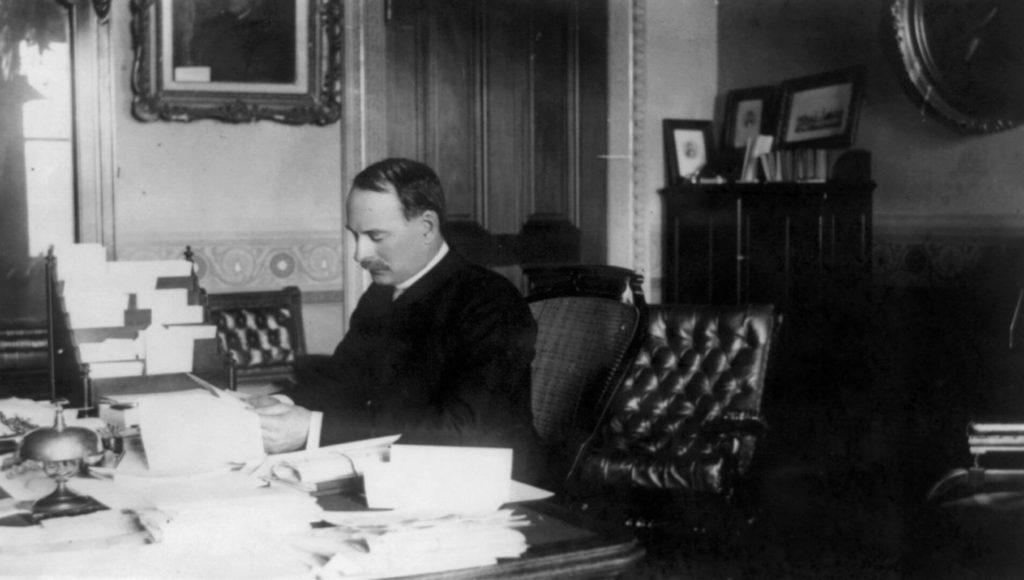
Construction of the Whitney Estate on October Mountain
John Root of Lenox, Massachusetts was the contractor who Whitney hired to build his hunting lodge, “the Antlers,” and honeymoon cottage, “the Nest.” Whitney insisted that the Antlers and the Nest were to be constructed in 20 days’ time so that the newly built homes would be ready to receive his son, Harry Payne Whitney, and daughter in law, Gertrude Vanderbilt after their wedding at the Vanderbilt mansion the Breakers in Newport, Rhode Island. A crew of up to 100 laborers worked around the clock to meet Whitney’s deadline. Calcium lamps were imported from New York City so that work could continue into the night. Design changes delayed the opening of the Antlers, but the honeymoon cottage the Nest was completed on time.

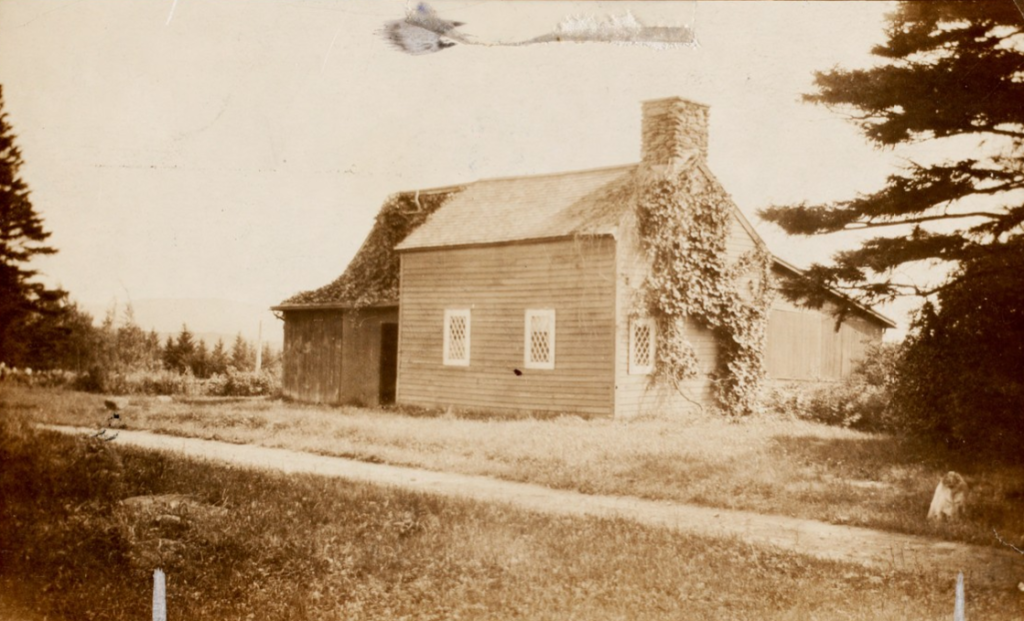
The Antlers was described as being somewhat plain looking on the exterior when compared to other gilded age cottages. This was however by design and was befitting for a hunting lodge. The cottage had a double angled roof and the exterior siding consisted of dark grey shingles. There were modern (for the time) bow windows. The interior of Whitney’s October Mountain cottage was said to be stunning with polished hardwood floors and intricate design elements throughout the house. The interior of the home consisted of a reception hall, dining room, library, and seven bedrooms that were described as being “sleeping apartments.” To the best of my knowledge, there are no surviving photographs of the interior of the Antlers. Whitney spared no expense, he even had running water, electricity, and a telephone system installed! As you can see, referring to Whitney’s October Mountain estate as a hunting lodge is a little misleading.
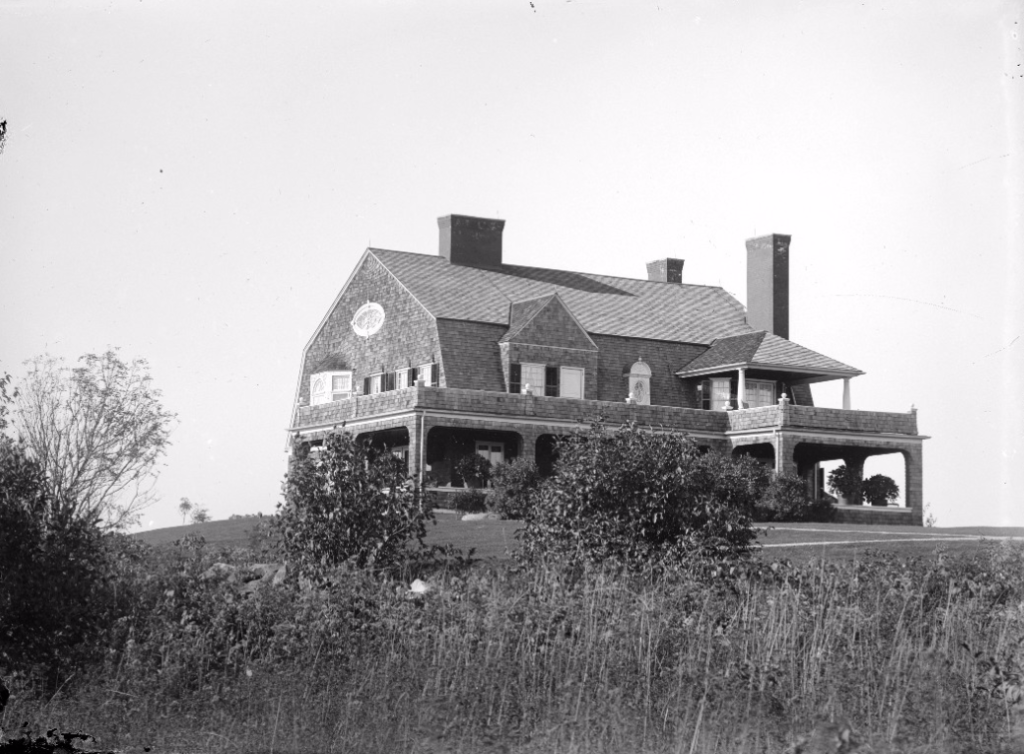
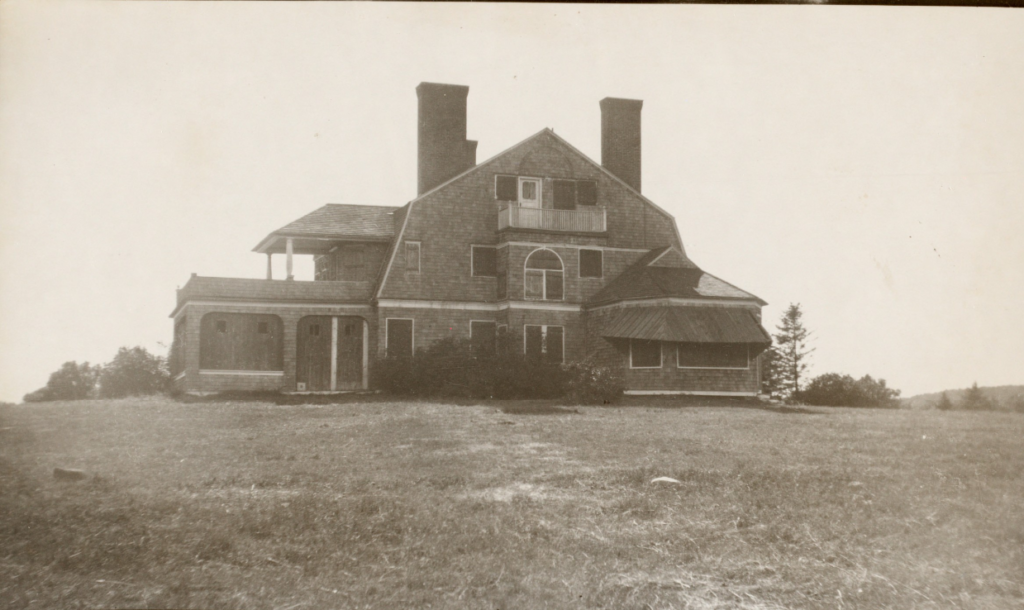
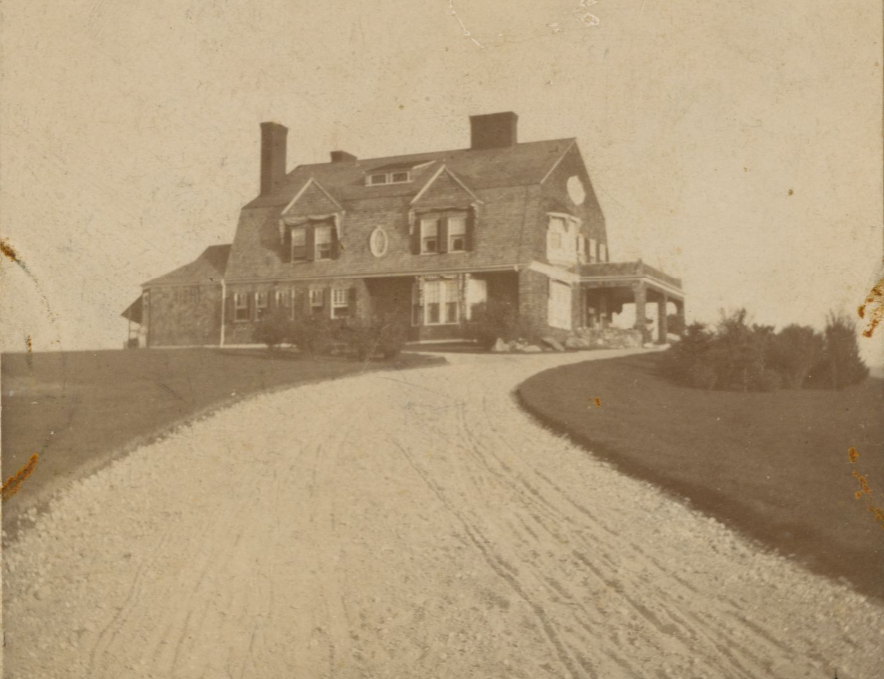
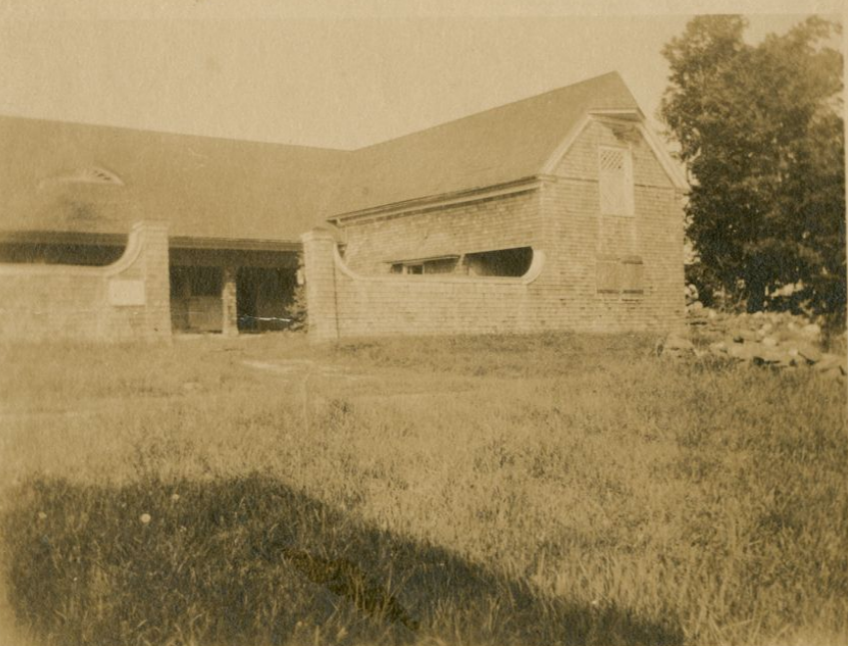
Whitney continued to build on his land until he amassed a total of 24 houses and 30 barns at his October Mountain estate. Many of these buildings were made available to his staff of 50 so that they could live onsite in order to maintain Whitney’s estate year round. The upkeep of the estate and game preserve created job opportunities for the local townspeople, and at one point Whitney paid more than 50% of the town of Washington’s taxes!
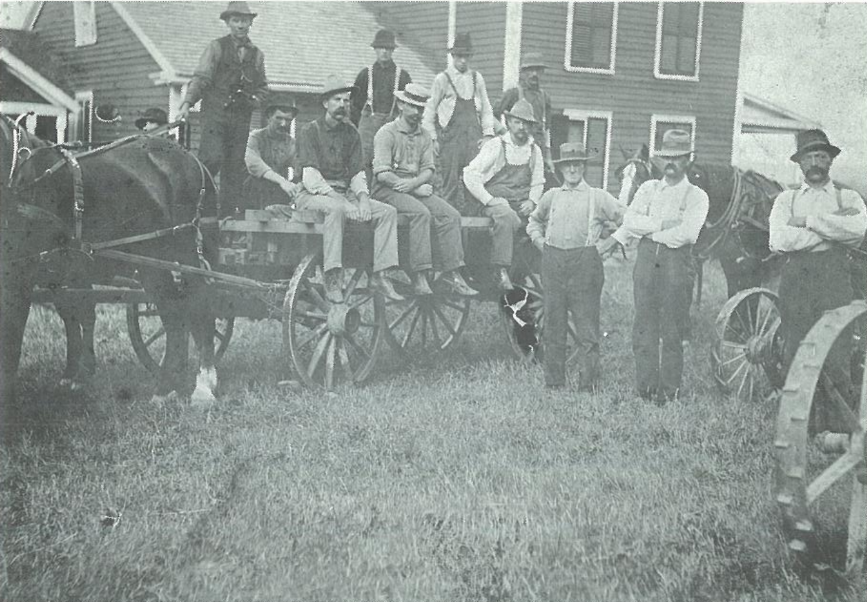
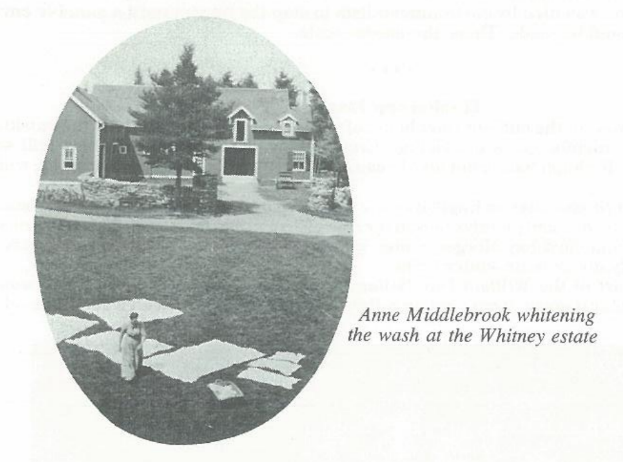
In addition to the barns and other small cottages, Whitney had a 150 foot tall water and observation tower constructed. Whitney also had a boathouse and pavilion built on Round Mountain Pond. I cannot find Round Mountain Pond anywhere on a map, but I did discover a very old wooden boat near Mudd Pond on October Mountain back in the 1990’s. Mudd Pond is round in shape, perhaps Mudd Pond was once known as Round Mountain Pond? Whitney had a tennis court, golf course, and countless bridal and bicycle paths built for his family and guests to enjoy.
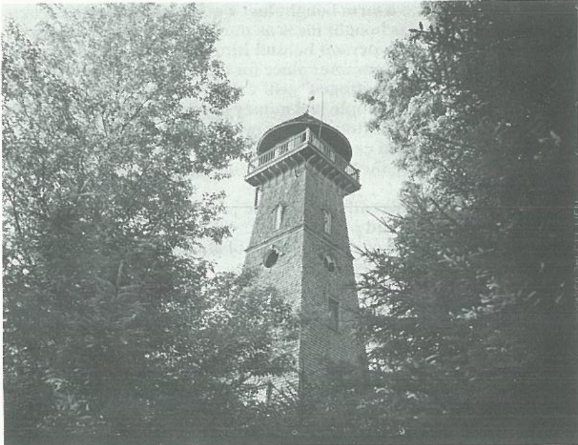
Whitney’s October Mountain game preserve.
Whitney primarily intended for his October Mountain estate to be a wild game preserve. Whitney imported exotic game animals such as black tailed deer, elk, buffalo, angora goat, and moose from all over the United States. At one point he owned over 180 elk alone! Whitney stocked the streams and ponds of October Mountain with trout and bass, and even began stocking game birds such as pheasant.
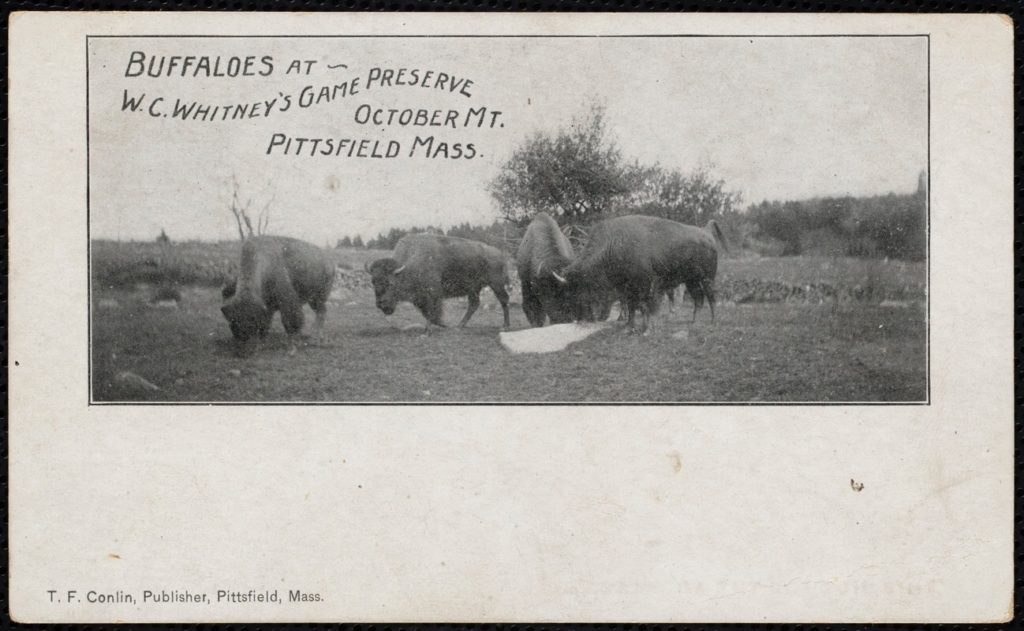
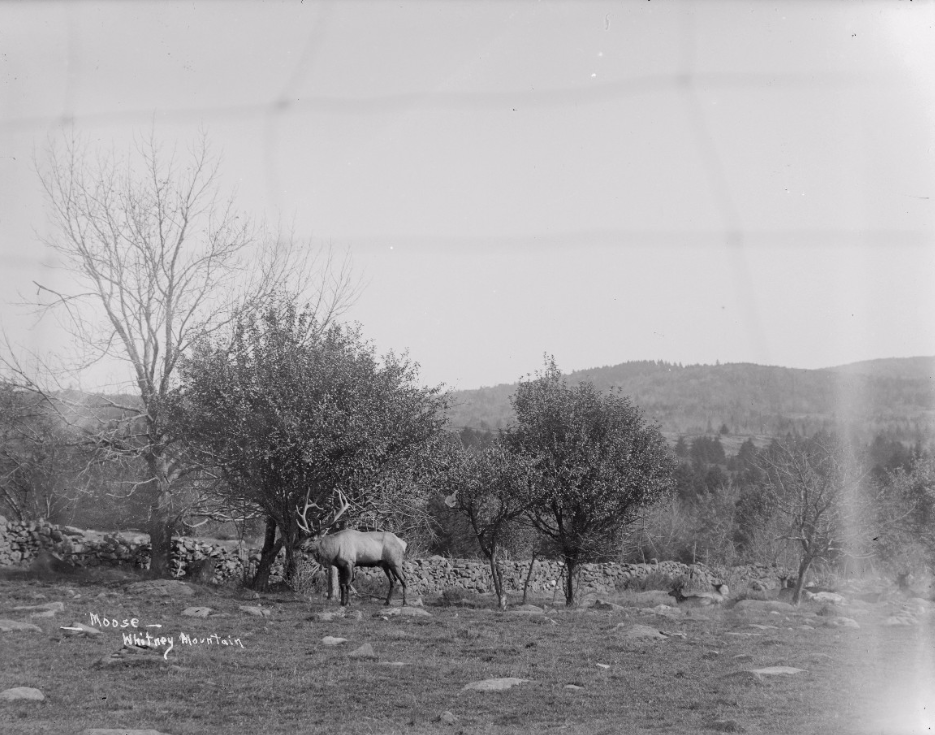
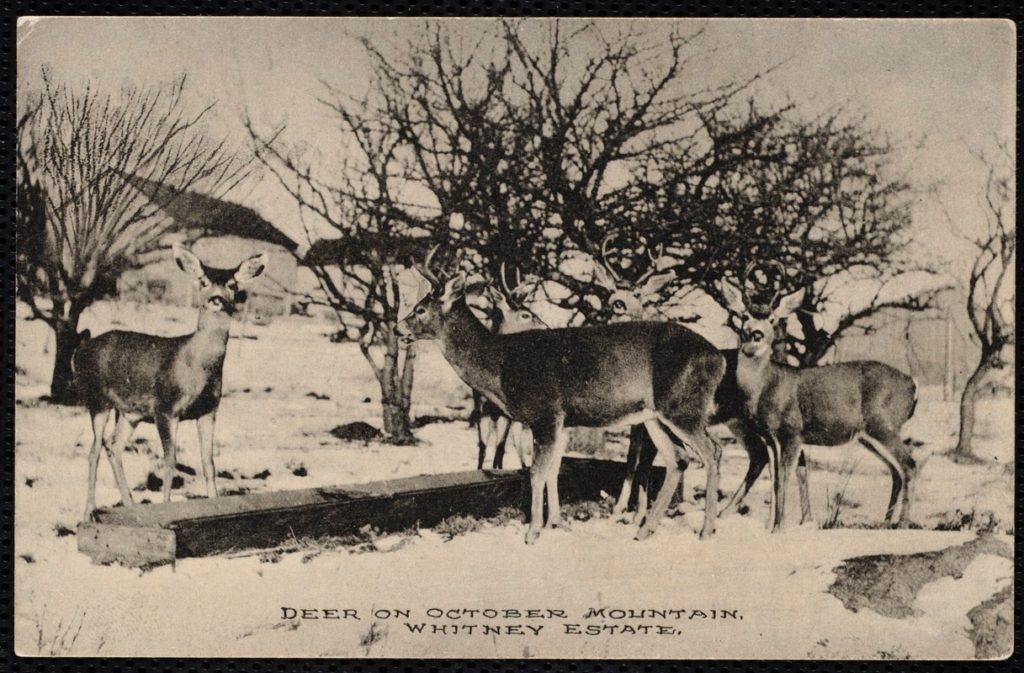
Transcript of 1899 Pittsfield Sun Article
The October 12th 1899 edition of the Pittsfield Sun featured a wonderful article about the Whitney Estate. The following article was written by James Hosding who was editor of the Pittsfield Sun.
It is a drive of about eight miles from Pittsfield to the Whitney place on October Mountain. We went by New Lenox, the mountain climb beginning at the Hutchinson saw mill, quite a pretentious building with dam and flume. The City’s dam seems to be a very good piece of work and there was a good supply of water. It looked as though it might be an important auxiliary to the Lake Ashley supply and worth the cost. Roaring Brook is a much larger stream and tumbles musically down the hillside and along a ravine, now flashing and foaming in little sunlit waterfalls.
The road is very good and not difficult. There are steep pitches of course but many restful “thank-you ma’ams,” when your team may breathe while you get glimpses of “far countries,” visible through vistas as you climb up. An unceasing wonder is the vari-colored foliage. There are trees as green as June and with them the most brilliant scarlet and yellows. The dark pines and spruce and hemlocks, the russet elm and the flaming maples, the silver poplars, illimitable acres and miles of color. It is said that an easier and better route is by way of Lenox Dale, but we find this route as comfortable as need be, and many sketches of glowing landscape delight the eye as seen from many sudden places of outlook.
Soon after crossing Roaring Brook evidence of extensive ownership begins. Signs on the roadside trees warn us against “Gunning, fishing or trespassing under penalty of law,” and these placards bear the signature of W. C. Whitney and are not to be trifled with. Some say they would chance the good nature of Mr. Whitney for a few partridges or rabbits in their season; but one glimpse of the burley game-keeper, with a blunderbuss at his beck, galloping along the ways and lanes that cross and border the estate, cures any disposition to poach. He looks fierce enough to take a man’s life for the theft of a chipmunk even, and so partridges dust themselves in the highway and perch temptingly upon the branches, and no man unauthorized lifts gun or pulls trigger.
The Whitney Settlement is just over the crown of the mountain with a southern exposure with northern view open to Greylock purplish blue in the distance. You come to “forks” in the road at last where the plateau begins. The road to the right leads to the head quarters of the big game where Mr. Frank Chapel and family have watch. From this little spot a vast stretch of brush and tree and brown hard hack pasture is in view. Down in the valley and on the Knolls and on Slopes are those strong figures on a Berkshire landscape, American deer, elk and buffaloes. Twenty three elks have been born on the estate the current year and there are now fifty nine head. The herd is increasing rapidly and the mountain will soon be as populous with this fine game as the woods of the shooting sections of Maine. Some of the bucks have splendid antlers and seem to be in fine health. All are in good condition, sleek and fat and almost as big as an ordinary horse.
There is a very picturey majesty about the old bucks as they toss horns and heads up when they scent or see an intruder, and it would be quite a brave man who would confront them. “She is going to roar,” she said trembling with terror, but it was we who “roared,” for the voice of the elk is a plaintive little cry like the call of a bird. And when Mr. Chapel whistled a score of the beasts came up to the fence, took some ground oats from the hand or pan, were petted and patted and then “She said, ‘Why to shoot these would be like shooting cows.”
The buffaloes wander at will and seem fat and stupid. There are nine cows and four bulls. Two have been born here and seem to thrive. They do not appear to be as domestic as the elk. They stood in the yard with heads down, sullen looking and sulky. It has been necessary to buy shed shelter for them in the winter and to feed them grain and hay. It gives one rather a queer feeling to remember that in almost recent years these animals roamed the plains in countless thousands and now there are in the country only such fragmentary herds as these, the race practically exterminated. The elks are becoming acclimated and are breeding well, but there has been less prospect of success in breeding buffaloes, some having died and the increase as yet not being up to expectations. Dr. Kinnew has been the veterinarian in charge for a year past and under his care the herd seems to be in better health than when left to a “state of nature” and it is now thought the herd may be not only preserved but increased. I heard that the English pheasants have now made the anticipated increase and it is charged that the foxes are very destructive to the young birds. The other experiments in game birds and beasts have been moderately successful.
The Whitney residence stands in a sunny bit of field, perhaps we should call it a lawn. A little way removed are the frames of a dozen little cottages, canvas covered upon an occasion and used as an annex to the big house when the company is larger than the mansion’s capacity. The servants are here for Mr. Whitney has been making flying visits, and there is a report that Harry Payne Whitney, family and friends are soon to be here. There are horses in the stables, carriages from the little buggy to the great coach in the barns and all the equipment for mountain touring.
From the front of the house, the view extends across the valley now autumnly gorgeous. Here and there are the little artificial lakes; beyond are the roofs of the cottages or other buildings essential to the oversight of such a vast estate of more than ten thousand acres, and the ownership extends far and across this vale and over and over its slope until the red summits meet the sky at the horizon.
The end of the Whitney Estate, the beginning of October Mountain State Forest
In 1899 William C. Whitney’s wife Sibyl died of injuries sustained during a horse riding accident. Deeply saddened by the loss of his wife, Whitney began to lose interest in his October Mountain Estate. In 1904 William C. Whitney died of appendicitis. Whitney’s heirs showed little interest in continuing with the upkeep of the estate or care of the game animals. Some of the animals on Whitney’s game preserve were captured and sold to private owners, while other animals were sent to zoos and game preserves. Unfortunately, some of the animals were poached including a Moose known as Old Bill. Old Bill was one of the last surviving animals from the original Whitney game preserve and was killed by poachers in 1920. Fortunately, Old Bill’s carcass was discovered before decay set in. His head was mounted and is on display at the Berkshire Museum.
One by one the cottages and barns on the Whitney estate fell into disrepair. In 1915 the Commonwealth of Massachusetts entered into negotiations with the Whitney family to purchase the approximately 16,000 acres that they had amassed. The land that was once the home of Whitney’s estate and game preserve would go on to become October Mountain State Forest. The Antlers burned down in 1929 after being struck by lightning. The Nest and water tower survived for several more years but were eventually torn down as they fell into ruin as a result of the harsh weather on the top of the mountain. In 1930 the CCC built a campground with picnic tables near the site of the water tower. This, along with almost all remnants of the Whitney estate have been devoured by nature.
There exists a disagreement among locals as to where the Whitney Estate actually once stood. Many people believe that the Whitney Estate was located at the four corners on October Mountain. This is an easy assumption to make because the field at the four corners is absolutely massive and could have easily been used as a location for a large home. The Whitney estate was actually located along Lenox – Whitney Place Road on October Mountain. A 1904 map of Washington substantiates this, and I have actually been to the footings of the tower and have seen what little remnants of the Antlers still exists.
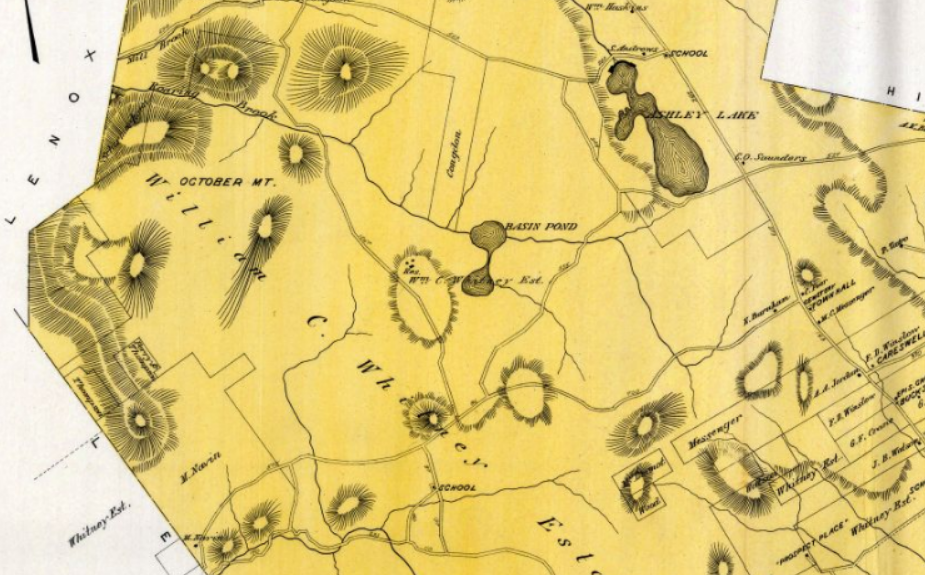
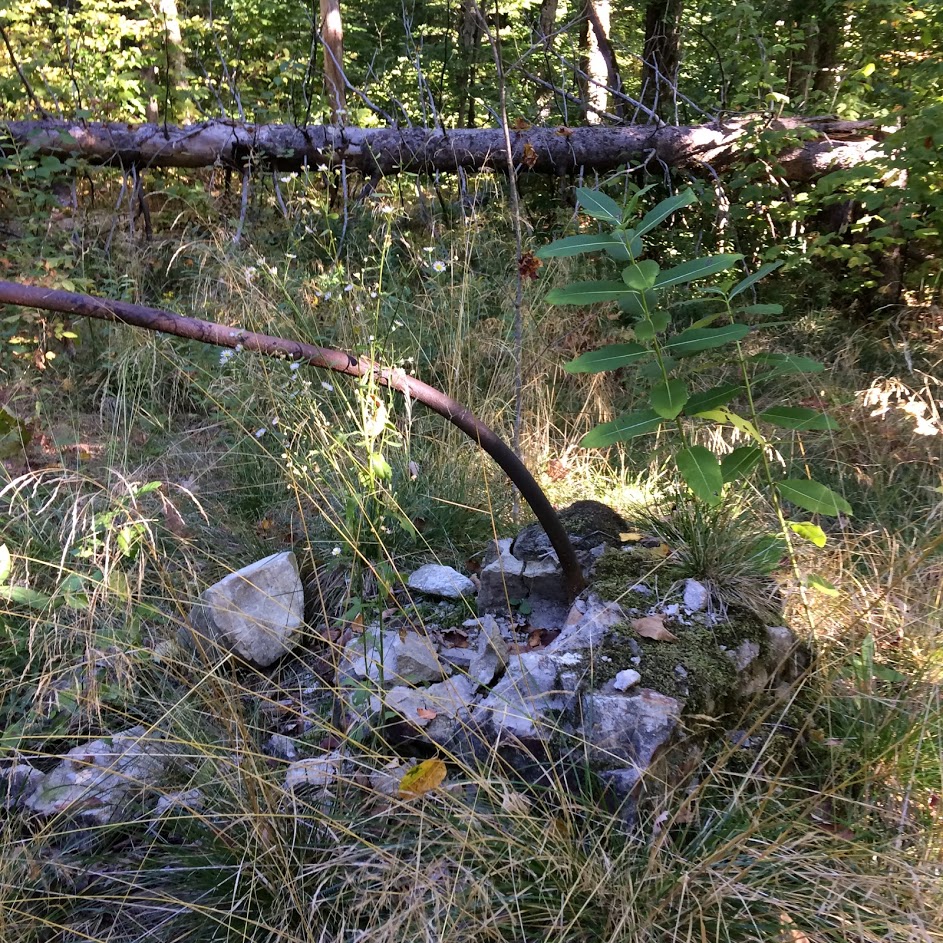
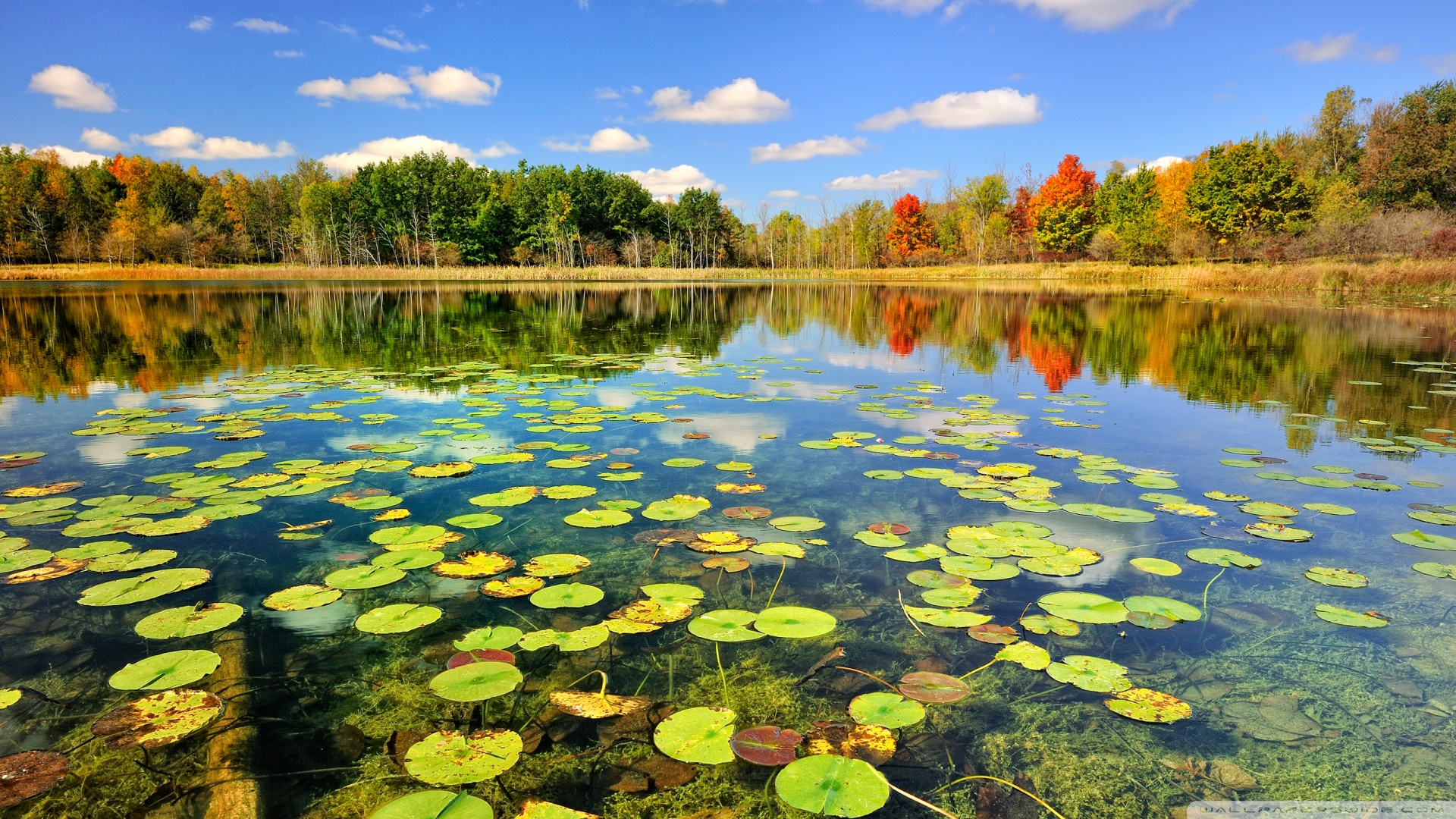
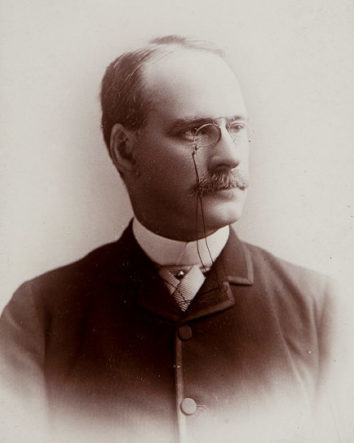
I saw a large black cat during the day on potter mt one was killed a few months later in ct hit by car it was tracked back through western mass
looking for information on two lost aircraft that disappeared over Beartown mt area in the 1920’s-1930’s
one is a Canadian WWI ace in a race from Boston to NYC for a cash prize–he had mechanical trouble and landed in the Lee Tryingham area to make repairs-flew off a few days later and disappeared in the 20’s
second a plane wrecked up on Beartown-hunters report what looked like the tail of a plane sticking out of a swampy area but the hunters were not able to locate it again the plane may have been called the Lady Be Good after a popular song in the 30’s
October mountain (DCR) state hqtrs. ….Has files of Whitney estate information and articles. Some of the fences are still on the mountain as pictures of structures were taken in 2000’s
The bass fishing has gone downhill due to an increase in panfish.
My great great grandfather, Charles Arthur McGill, worked on the Whitney estate and lived in a cabin (built over a brook, reputedly) in the woods in what in now the park. After he died, his son lived in the cabin and was offered the opportunity to be “grandfathered” in when the land became a park. Unfortunately, he would have had to pay taxes, which he couldn’t afford.
I have both mountain bikes and hiked with my dog on OMSF and live the wilderness feel of the land. Do you happen to know the origin of the fountain which sits below one of the reservoirs, and to this day spouts water coming from the reservoir above the aqueduct? It looks like it belongs in a major city as opposed to hidden in the woods.
Art where is this foundation?
Its just below the Sandwash reservoir dam.
We were also wondering about the history of the fountain. Was it built by Whitney for decoration or does it have more purpose ?
Elizabeth, the fountain below Sandwash is actually an aerator, built during the construction of the dam by the City of Pittsfield, in the late 30’s. I believe the aeration of the water eliminates some of the tannins in the water.
I have been trudging back and forth over the area where the antlers should be. As per Whitney’s map and with a friend who was last there when it was almost still a field. A large part of one of the antlers still was standing in 2000 I’ve read. Found a couple wells and stone foundations but none that resembles what should be the antlers dimensionally. We probably found the remains of the caretakers home on roaring brook as well. Seems as if in our trudging back and forth where it should be we’re somehow just missing it perhaps. Haha
Found some large old iron parts from a chimney flu and thought success was soon to follow. Nope. Haha. Any pointers from anyone out there?
great article i live in lee and i love reading this kind of stuff!